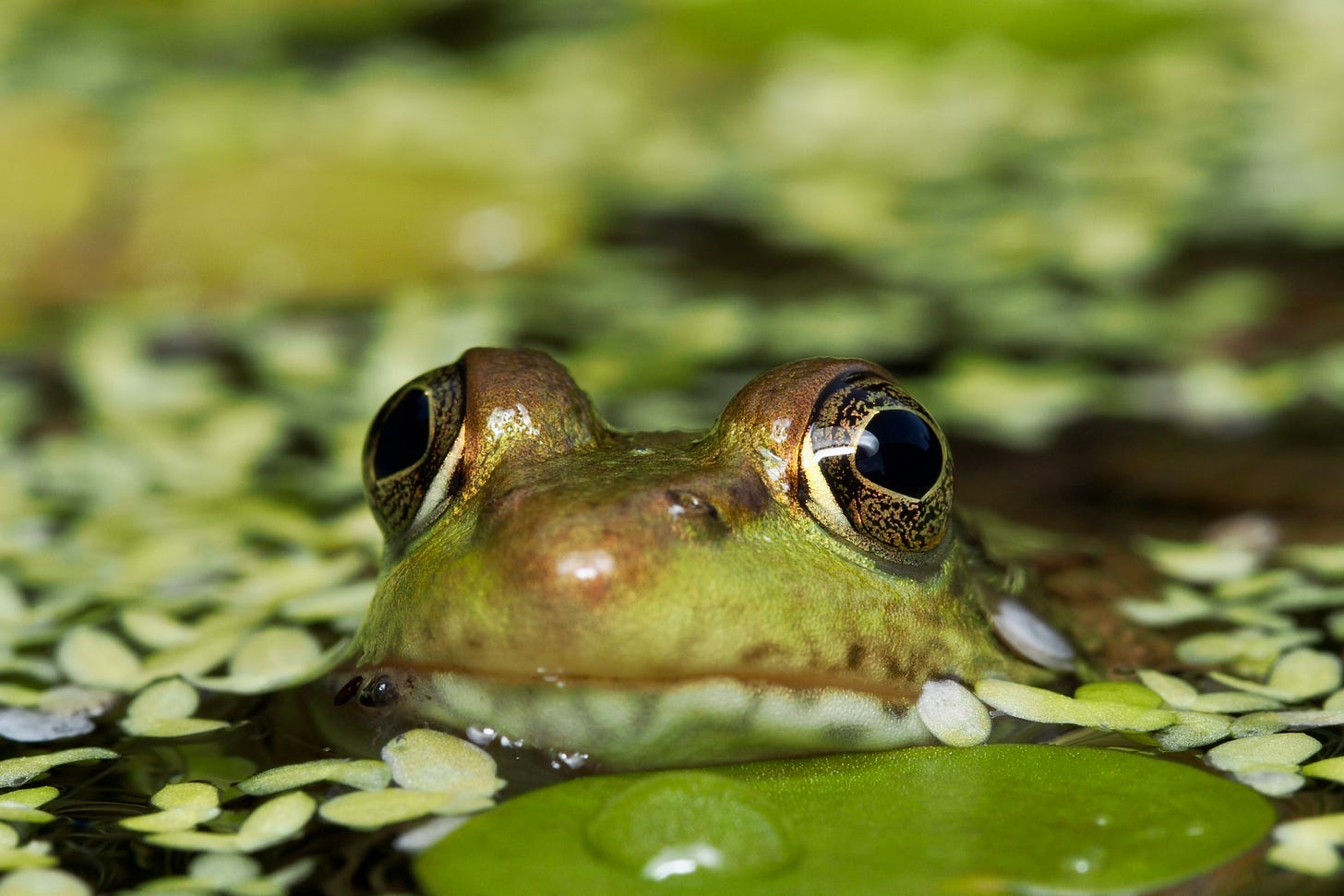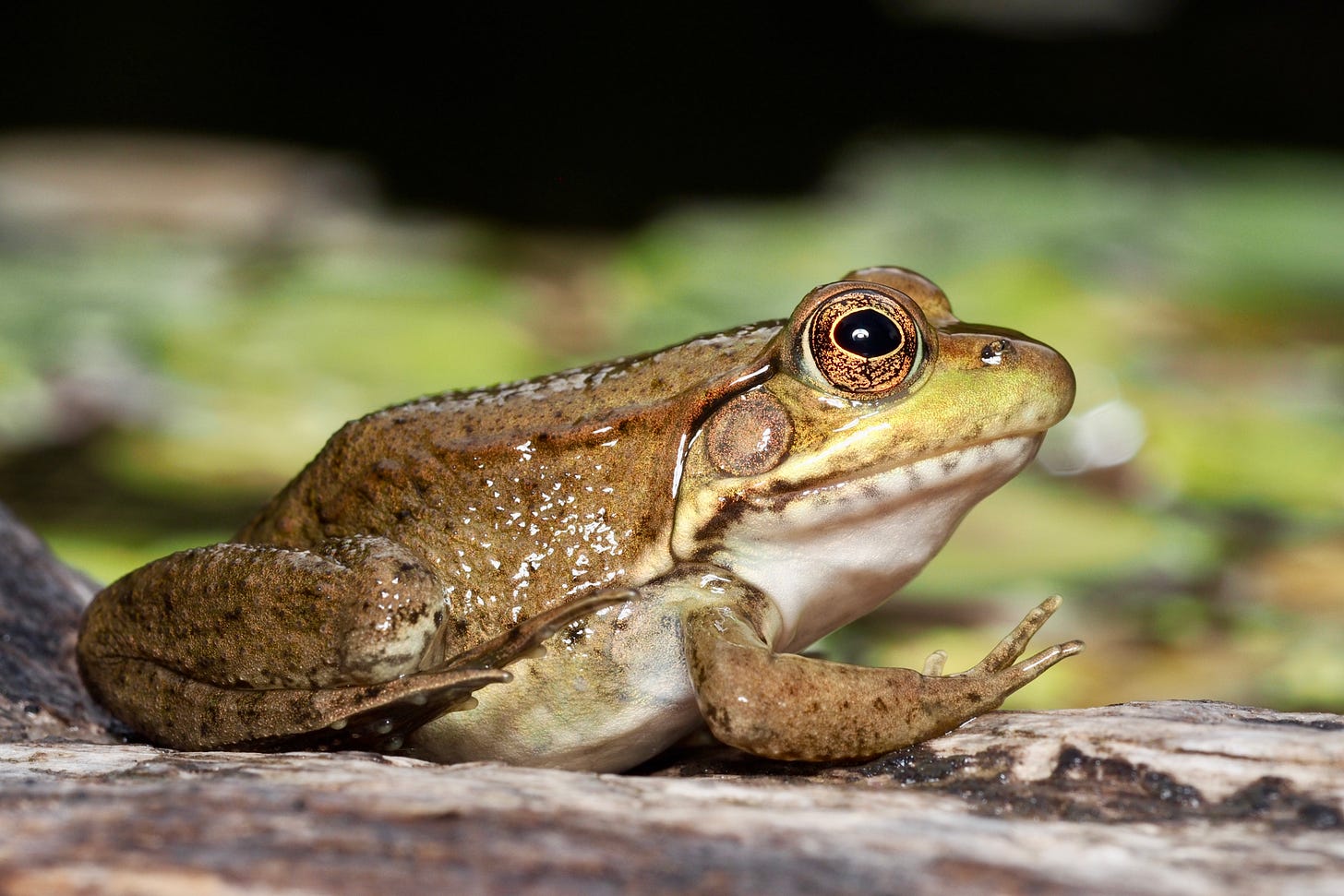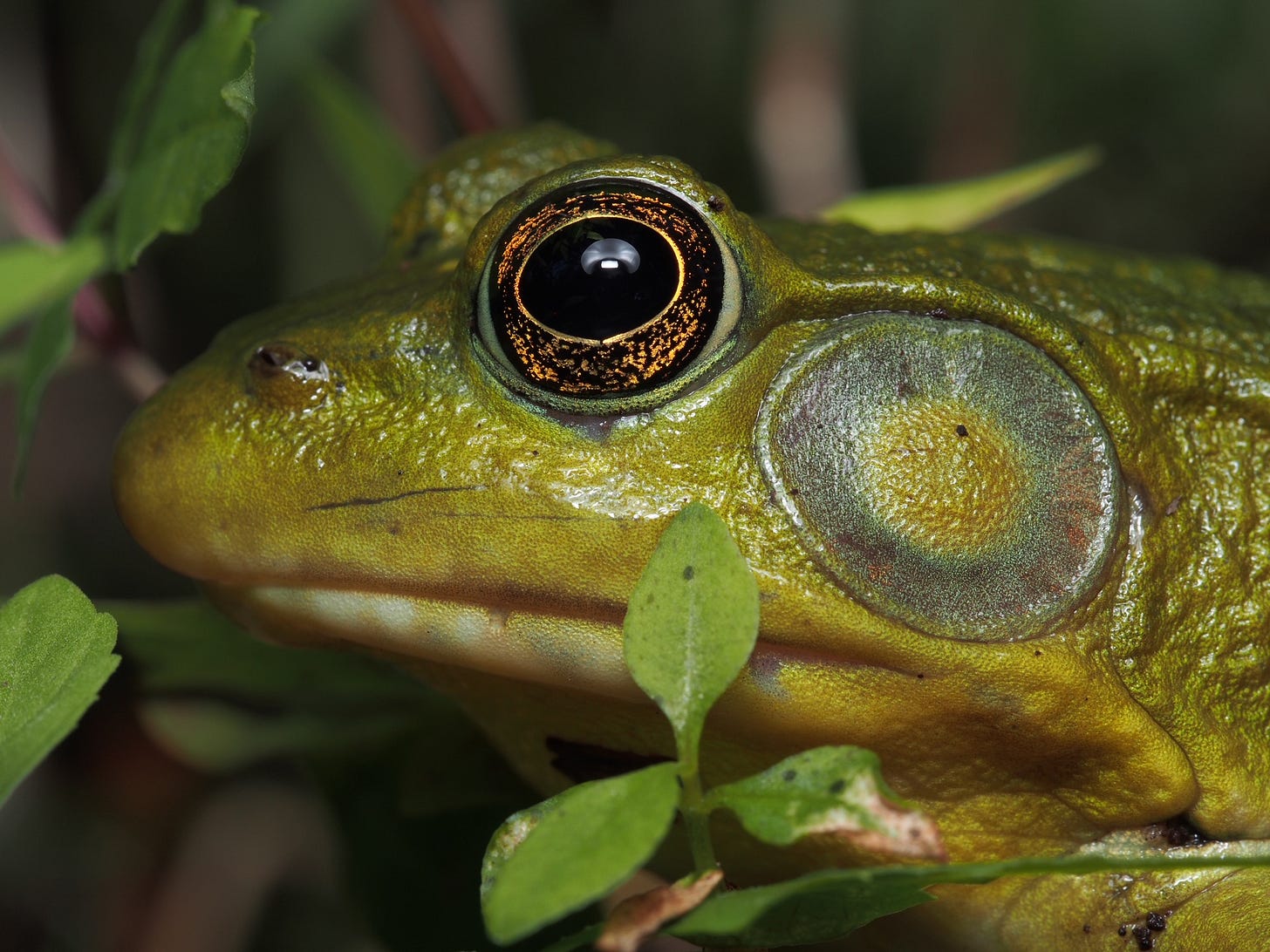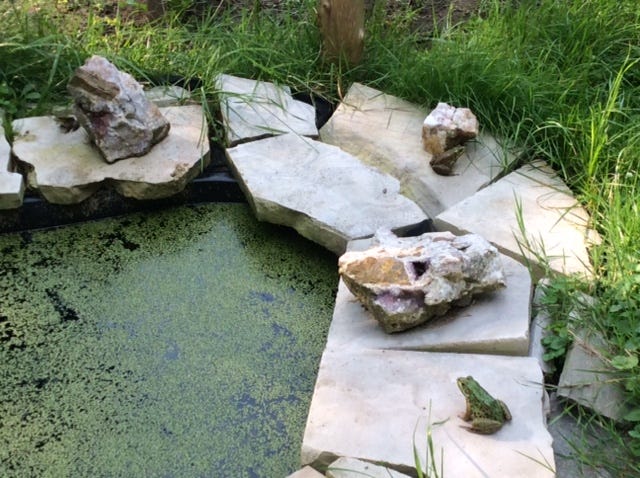Clichéd but true. Frogs are fun, and not just the ones named Kermit. Staring up at you, google-eyed, from a lily pad, leaping out from vegetation at your feet, landing with a splash in a puddle or lake, they’re surprising, attention-grabbing, delightful. I think so, anyway.
So having a frog pond in the front yard has made summer, my favourite season, even more fun and interesting. My new “hobby”—obsession?—is tiptoeing across the lawn to count the current residents, check their sizes, colours, locations, and see what they’re up to. Don’t want to disturb them! Just peer into their mysterious amphibious lives and get to know them a little better. Frogs live like us in fresh air and sunshine, but then dive into the watery depths and stay there. How remarkable to be at home in two worlds.
“Build it and they will come” sure worked for us. Dennis has wanted a frog pond for ages, having hauled home a big black pond liner he bought secondhand from a neighbour years ago. We couldn’t agree on where to put it; I pictured it tucked away in the side yard, where there’s unfortunately not much sunlight. So it stayed upside-down near our compost heap until last fall, when a stalwart son-in-law who worked in landscaping during college years offered to dig a hole for it, and forced a decision.
Ta-da! Instead of our water lily barrel, which actually had a green frog visit it one day, we now have a bona fide frog resort out front. Dennis drove around the countryside last September hunting for a key ingredient of a healthy pond, duckweed, which sinks to the bottom in winter and rises up again in spring.
It did. We smiled, watched and waited, and were eventually rewarded with green frogs moving in, floating in the water with duckweed on their noses, sunning themselves on rocks around the pond, and hopefully, in the dead of night, finding lots of slugs and insects to eat in the garden nearby. Individual frogs come and go, but we’ve sometimes had five at once.
I’ve been surprised by how much time they spend totally motionless, not moving a muscle. Conserving energy for a quick escape from danger? Waiting to ambush a foolish fly that lands within reach? The most activity I witnessed was when a garter snake slithered by and scared the living daylights out of the smallest frogs in particular. Suddenly one came leaping across the lettuce patch, threw itself again the chicken wire fence, fell back, then dived again, making it through and splash! into the water and safety, with split second timing.
It was only then that I noticed the snake winding slowly among the rocks. Grabbing binoculars, I rushed up to the balcony to watch the resulting drama—the slim reptile stretching its head out over the water and freezing there for long minutes, tongue flicking, until finally retreating into the grass in disappointment. No frog legs for dinner today.
Also surprising to me is how silent our visitors are, though Dennis tells me he’s heard an occasional “plucked banjo string” sound, familiar in wetlands across eastern North America, the green frogs’ range. It’s supposedly produced most by territorial males, so hearing a quiet, unfamiliar croaking through the screen door early one morning drew me out onto the porch. To find our two biggest frogs clasped together in what I’ve seen on TV as their classic position for laying and fertilizing eggs.
In early September? Don’t frogs mate in spring? I stepped back out of sight, leaving them their privacy, but sent them diving underwater, still clasped together, when I checked again twenty minutes later. Sorry, guys!
It was only then that I started researching green frogs and their life cycles. Learning that males have “eardrums” larger than their eyes, while those of females are the same size, good way to tell gender. Though green frogs come in green, brown, bronze and even blue, they all have a bright green upper lip, and a ridge of folded skin running halfway down their back, one on each side. Adult males often have a bright yellow throat they show off to potential mates, and adult females can lay eggs more than once throughout summer.
So was that glutinous glob filled with black specks lying on a lily pad a day later actually frog eggs? Some seem to have washed away by now, but I’m keeping a close eye on the situation, since tadpoles could hatch out in as little as a week, experts say. Curiously, both large frogs left right after mating and haven’t been back since, leaving our pond to the smaller ones, which take a year or two to mature, after two seasons as a tadpole.
What to do with them over winter is another thing to think about. But for now we’re having lots of fun, running out to watch, report, and rejoice in the wonders of life.











I have had a pond for many years, and love when the frogs appear. We see the tadpoles in the spring, and then watch them grow into frogs. Our neighbor, has a very large pone, and some days our frogs disappears. I really believe they view our small pond as the cottage!
I'm so happy that you directed me to this site, as mentioned below, I enjoy your writing.
Always enjoy your writings. It’s terrific that you have provided a habitat for the frogs to live in (and hopefully reproduce). We need more frogs!